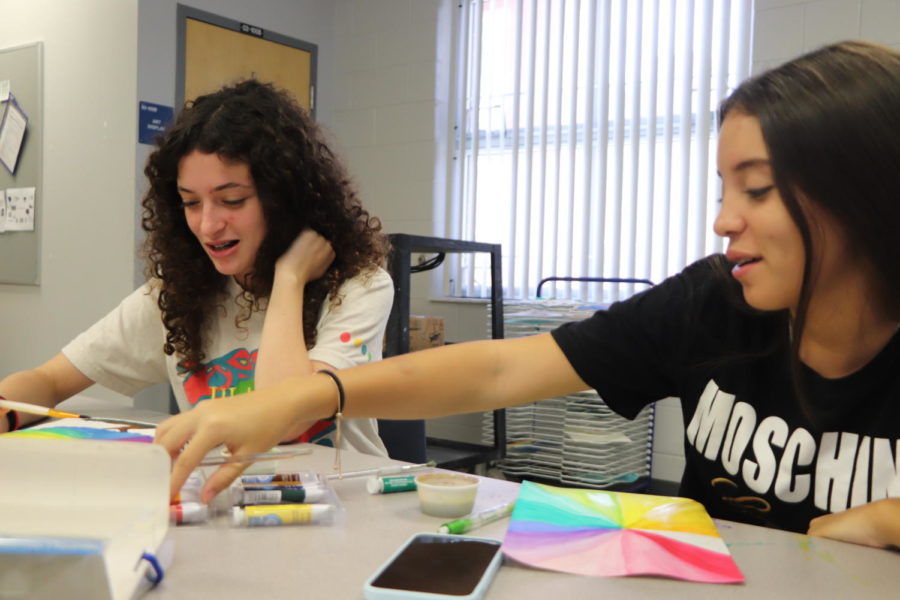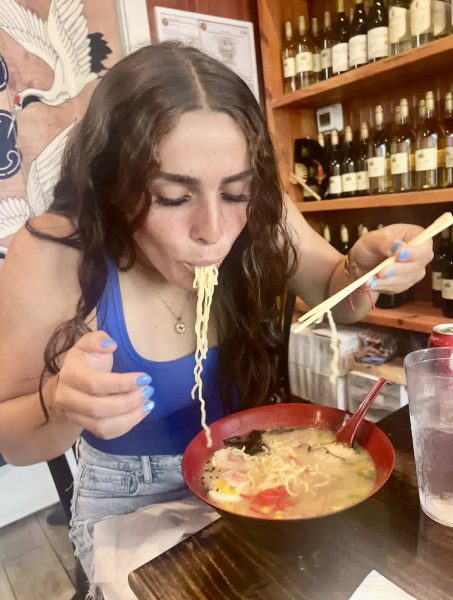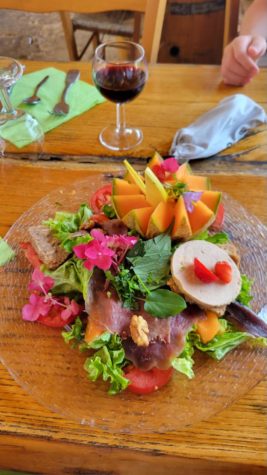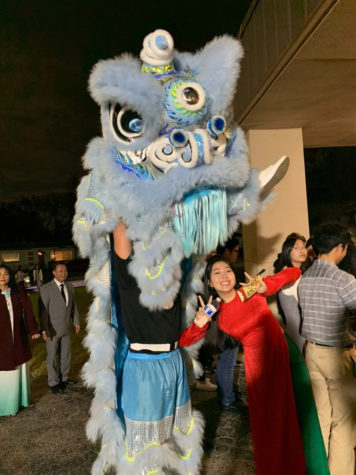Husky Heritage: Angelina Aragón-González
photo by Janell Lim
Sophomore Angelina Aragón-González and freshman Ivy Thompson paint in their 2D Art class. Aragón-González feels that Colombia’s culture is more friendly and open than America’s.
Sophomore Angelina Aragón-González is used to moving around, first from the U.S. to Colombia and then back again. However, moving around is not something unique in Colombia, but rather, an unfortunate fact of life.
“Specifically in Colombia, you never stay in one place,” Aragón-González said. “It’s really hard to live your entire life in one place because there’s usually always something going on with the government. So they make you move out and it impacts everyone because you have to get a new house. It sucks emotionally because every three to four years, you can’t be in the same house.”
According to Aragón-González, the Colombian government constantly tries to renovate and build new malls and stores to replicate the U.S. However, this process often involves destroying the land and the houses that people live in, including Aragón-González’s family.
“My mom loves nature. So she’ll usually have a house where there’s no other houses around,” Aragón-González said. “But the [government] would come like twice a year to tell us to resell the house. They’ll give us money so that they can stick something else there. And my mom was always mad about it but she had to go because she was the only house around and nobody was going to fight with her.”
Although Aragón-González was born in the U.S., her mother took her back to Colombia when she was a toddler. Aragón-González spent nine years in Cali, Colombia, where she recalls running across Colombia’s mountainous landscape.
“There’s a lot of nature in Colombia, so I’d always be running up and down the hills all day,” Aragón-González said.
Her mother returned to Colombia for that exact reason: she preferred Colombia’s open spaces and nature compared to the urban landscape in America. Aragón-González eventually moved back to the US, staying with her father in Florida, because of better educational opportunities.
However, she still has fond memories of Colombia, whether it was celebrating a family tradition or a nation-wide celebration. Aragón-González’s family celebrates La Noche de Blanco, or White Night, by traveling to Cartagena, Colombia dressed all in white and throwing paint on one another. El Dia del Amor y Amistad, or Day of Love and Friendship, is celebrated on Sept. 17 and is Colombia’s version of Valentine’s Day. Many traditions found in America have their Colombian equivalents, like Christmas and La Navidad, Aragón-González’s favorite holiday.
“In Colombia, we actually open our presents at midnight from the 24th to the 25th. And there’s a big dinner before then, the whole family gets together and it’s really fun,” Aragón-González said.
Although Aragón-González has many fond memories in Colombia, she also remembers the not-so-fond ones, like seeing the poorer areas.
“[Colombians] definitely do need a little bit more help because [in America], the government helps you a lot, but in Colombia, you’re on your own. So it impacts my personality and how I want to treat other people,” Aragón-González said.
Aragón-González also noted differences in people’s behavior. She feels Colombians are more friendly and open than Americans.
“[In America], people are too reserved with each other,” Aragón-González said. “In Colombia, when you see a stranger, you say hi to them. No matter who they are, Colombians act like they all know each other.”
Your donation will support the student journalists of Hagerty High School. Your contribution helps us publish six issues of the BluePrint and cover our annual website hosting costs. Thank you so much!












